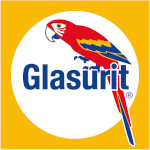HMRC Issues Guidelines For Registering Restoration Projects Imported Prior to NOVA
Published: 24/09/2013
24th September 2013. The Federation has been made aware of difficulties being experienced by members trying to register historic vehicles imported prior to the introduction of NOVA where there is incomplete documentation. The online application process permits no deviation from submitting a full declaration. On behalf of those members and others we raised this issue with HMRC and they have now issued the following helpful guide to the completion of an application, making clear that it requires use of the paper NOVA1 Form. It reads…
“The Notification of Vehicle Arrivals (NOVA) system was introduced on the 15th April 2013 as a joint initiative between HM Revenue and Customs (HMRC) and the Driver and Vehicle Licensing Agency (DVLA) to combat fraud on vehicles arriving permanently into the UK. HMRC have produced a VAT Information Sheet 06/13 for individuals and traders which can be found on the HMRC web site at ‘www,hmrc.gov.uk.’
Para 6 of the above information sheet concerns ‘Transitional Arrangements’ regarding vehicles that have been acquired or imported prior to the advent of NOVA. Section (a) of the sheet explains what to do if there is insufficient evidence of the vehicles arrival to make a notification.
HMRC are aware that vehicles may be acquired or imported into the UK as a project for restoration and it may be many years before a vehicle has been restored to allow it to be registered with the DVLA for road use. Between the time of acquisition or import and eventual registration the vehicle may have been sold or ownership transferred on numerous occasions, and that over the years details of the acquisition or importation and by whom may have been lost or not transferred to subsequent owners.
HMRC would not condone an individual to make a false declaration, but in cases where there is no original importation/acquisition document, HMRC will accept a partially completed NOVA1 notification form by the current owner of the vehicle. Accompanied with the NOVA1 should be a letter of explanation and any information regarding the history of the vehicle. These may be invoices showing purchase in the UK, invoices for parts etc which will provide an audit of the vehicles history. HMRC accept that documentary evidence will be different for different projects, i.e. some vehicles will be barn finds, others restoration projects, however the aim is not to cause distress to your members but to ensure that HMRC are aware of the vehicle and that your members are able to achieve a UK vehicle registration with the DVLA so the vehicle can be legally used on UK Roads.
The paper NOVA1 form and audit evidence should be sent to the following address:
HM Revenue and Customs
Personal Transport Unit
Building 22
Priory Court
St Johns Road
Dover
Kent
CT17 9SH
An Officer of HMRC will input the information into NOVA, there is a 14 day service standard date on inputting NOVA1’s, which should allow a secure status to be given and the vehicle to be able to be registered with the DVLA. If further information is required the HMRC Officer will contact the owner and advise them of what is required.
However, not all your members will be in the unfortunate position of having no evidence of acquisition or import and in some cases a C&E389 or a VAT414 may have been passed to the new owner by the importer or acquirer. In those cases the form and a copy of the purchase invoice should be sent to the Personal Transport Unit at the address shown above.
As long as the invoice accompanying the document shows the vehicle was purchased prior to NOVA’s implementation, the HMRC Officer will endorse the C&E389 or VAT 414 with a pre-NOVA date stamp. This will be accepted by the DVLA and registration can be progressed. If either the form or the invoice is not available then your members must use the NOVA1 procedure explained in the above paragraphs.
In other cases a C&E386 or a C&E388 form may have been provided to the new owner by the importer of the vehicle. These documents will be accepted by the DVLA because they should already have been endorsed with a date stamp prior to NOVA’s implementation. There is no requirement to send these forms to the Personal Transport Unit they should be presented to the DVLA when making a declaration for road registration. Please note with the advent of NOVA the C&E386 and C&E388 will no longer be issued by HM Revenue and Customs.
If a form VAT 415 has been provided to the new owner by the original acquirer, the form will not be accepted by HM Revenue and Customs as this form was a notification for a new means of transport brought into the UK from another EC member state. In this case your members must use the NOVA1 procedure explained in the previous paragraphs”.
Downloads
| NOVA Notes.pdf | |
| NOVA1 Form_1.pdf |










